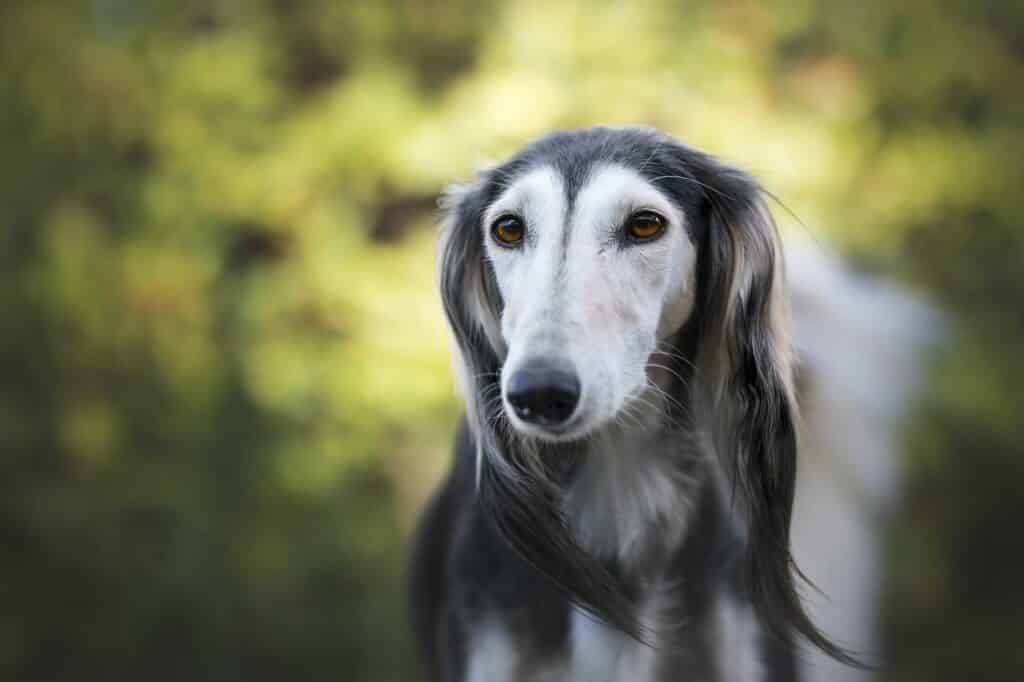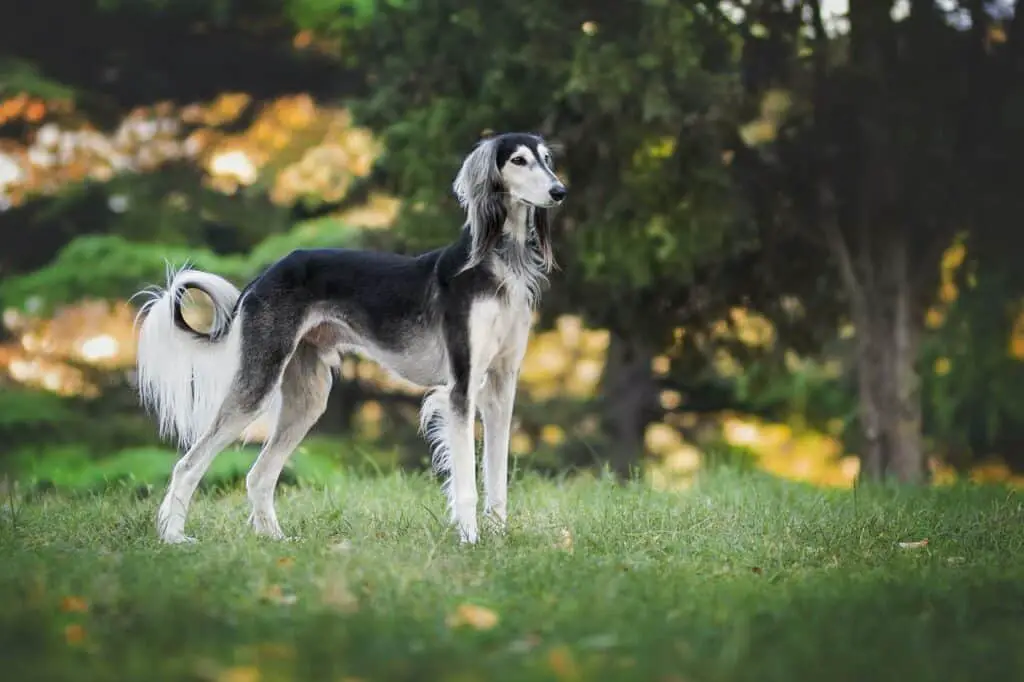Aside from their loving and well-mannered nature, greyhounds are also famous for their clean coats, making them perfect pets.
However, the question of shedding is vital before getting a furry best friend especially if you are dog allergic or dislike dealing with fur or hair.
So, do greyhounds shed?
Greyhounds are average shedders.
Although their shedding increases as the seasons change yearly, you could easily forget that they do so because it’s barely noticeable.
These dogs also have a short coat that requires little maintenance, thus minimal shedding.
This article discusses everything you need to know about greyhounds shedding and how to deal with it.

Benefits of greyhounds’ coats
Besides their minimal shedding, greyhounds’ coats have a couple of benefits to their owners, which include:
- Minimal maintenance
Due to their short coats, greyhounds require little maintenance.
Your pooch will need grooming at least once every three months, provided you keep up with the daily brushing.
Consequently, helping save your cash and time.
Additionally, greyhounds also self-groom in between your daily brushing, thus saving you a lot of work when doing so.
- Zero fleas
Fleas can hardly hide in greyhounds’ short fur.
However, don’t fret if you notice any crawlies on your pooch because removing them is easy.
- Mud free
Although taking your pup on a walk is suitable for their health, this can be hectic during winter if they have lots of furs that quickly get muddy.
However, you won’t have to worry about that with greyhounds as they have short fur and their coat is oil-rich; hence the mud easily slides off.
- Odorless
Dogs’ smell is caused by drooling and dead skin on their coats.
Greyhounds smell less than their counterparts because their short fur doesn’t hide dead skin.

Why greyhounds shed
Greyhounds naturally shed as the seasons change, just like all other dogs.
They renew their coats twice yearly, first when it gets warmer and then as it gets cooler.
These canines shed during the spring to grow a new fuzzier winter coat.
On the other hand, they also lose extra fur during the fall in preparation for high temperatures in summer.
This process takes a toll on greyhounds; they may experience itching and excess panting along with the shedding.
Your greyhound also sheds lightly on regular days to keep its coat healthy and fresh.
Their fur protects them from outside barriers like insect bites, infections, or extreme temperatures and thus should always be strong.
What makes greyhounds shed much
Excessive shedding in greyhounds is questionable as it’s not normal for them.
You should look out for the following factors in case this happens.
- Heat – Your pup could be shedding because the temperatures in your home are high. Start by turning down the thermostat to see if there’s any difference.
- Age – Greyhounds’ skin cells get worn out with age. Thus, it’s only natural that they will shed some more. It’s advisable to try using quality shampoo in such a case.
- Skin cancer – These canines have delicate skin because of their short fur, making them susceptible to cancer as they are more exposed to various elements.
- Liver/kidney failure – If your pooch can’t digest essential nutrients properly, its fur is guaranteed to fall. In this case, it’s crucial to visit the vet for further examination to see if the problem can be dealt with or not.
- Diet – Greyhounds require a diet rich in vitamins, fiber, and protein. They will start to shed if they don’t get these nutrients. Therefore, switch to better-quality dog foods to reduce it.
How to stop greyhounds from shedding excessively
- Offer a good quality diet – A proper diet maintains a shiny and healthy coat. Therefore, feeding your greyhound quality food will reduce the amount of fur lost.
- Brush your pooch frequently – Brushing your greyhound at least once weekly will help eliminate any dead fur and thus reduce the amount shed.
- Regular exercise – Exercising improves greyhounds’ blood flow, promoting a healthy coat. Furthermore, these dogs are active and require a lot of movement to stay in good shape so ensure they always do so.
- Visit the vet – The best solution to greyhounds’ shedding is to see the vet as they will figure out the underlying problem and offer a remedy.
How often should my greyhound bathe?
Although you may be tempted to clean them frequently, your four-legged friend is allowed to bathe at least once every month.
This is because frequent bathing will irritate your grey hound’s skin, causing them to shed more in the long run.
Always use a good quality shampoo when bathing your pup.
Avoid human shampoos because they contain chemicals that dry out dogs’ skins resulting in itching and increased shedding.
Greyhounds grooming tools
Although these canines require proper grooming once every three months, it’s essential to do it using the right tools.
These include:
- Slicker brush – Its fine short wires will help remove mats and knots that could be present on your four-legged friend’s coat.
- Bristle brush – This brush has stiff hairs that eliminate the dead fur and dirt on your canine’s coat.
- Grooming gloves – These will come in handy when getting all the loose fur to the top coat for easy removal.
Is my greyhound hypoallergenic?
Greyhounds are not hypoallergenic.
People with dog allergies don’t have problems around these canines as they don’t shed much, meaning they hardly spread dead skin, which causes allergy flare-ups.
Additionally, these pups don’t produce many natural oils and hence have less dander, another cause for allergic reactions.
Frequently asked questions (FAQs)
Does my miniature greyhound shed?
Miniature greyhounds are minimal shedders and require little grooming because of their short fur.
However, you should brush them regularly because they are always on the move and quickly get their fur dusty.
Why does my retired racing greyhound shed excessively?
Retired racing greyhounds shed a little bit more than their counterparts.
This is because they previously had thicker furs while racing as they lived in kennels outside.
In this regard, they are guaranteed to shed a little more after settling in your cozy home.
However, this reduces to normal shedding after one year of adoption.
Conclusion
While shedding is not a problem with greyhounds, it can increase uncontrollably if your pooch doesn’t get all they need, as described above.
Take care of your four-legged friend by constantly grooming them, and you will be guaranteed a fur-free home.
- What Dog Breeds Have Pink Skin? - March 24, 2023
- What Are the Most Inspiring Dog Breeding Quotes? - March 20, 2023
- Can Pheromone Spray Help Improve Dog Breeding Results? - March 19, 2023








